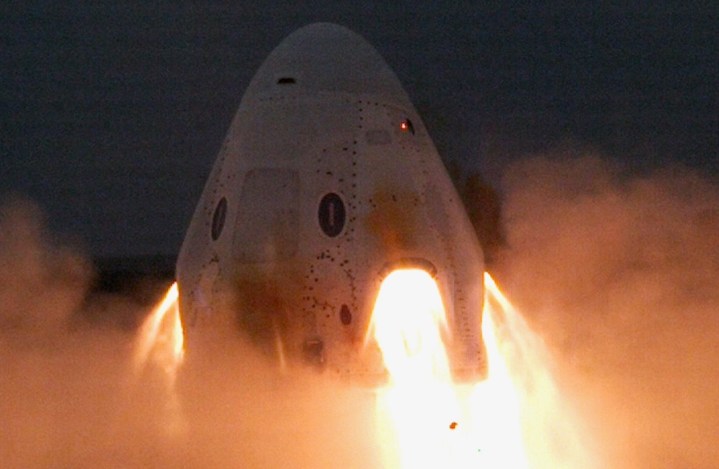
SpaceX completed a ground-based test of its Crew Dragon’s launch escape system on Wednesday, the first such test since April 2019 when an explosion wrecked the capsule. No one was hurt in the incident.
The space company led by billionaire entrepreneur Elon Musk announced in a tweet that a “full duration static fire test” of Crew Dragon’s SuperDraco emergency engines had taken place at Cape Canaveral, Florida and that it was now working toward an in-flight test of the same system. The engines are designed to activate in the event of a problem during launch, carrying the capsule and its occupants away from the rocket and out of danger.
Full duration static fire test of Crew Dragon’s launch escape system complete – SpaceX and NASA teams are now reviewing test data and working toward an in-flight demonstration of Crew Dragon’s launch escape capabilities pic.twitter.com/CMHvMRBQcW
— SpaceX (@SpaceX) November 13, 2019
SpaceX will now be examining the data from Wednesday’s test to determine if the engines performed as expected. A green light will be a major boost for the SpaceX team, which is determined to move on from April’s setback. An investigation into the explosion showed it was caused by a leaky valve that allowed propellant to enter high-pressure helium tubes. After fixing the issue, the team was able to proceed with this week’s test.
SpaceX plans to use the Crew Dragon capsule to ferry astronauts to and from the International Space Station (ISS), ending NASA’s reliance on Russian spacecraft for the trip. SpaceX’s similarly designed unmanned Dragon capsule has already made multiple trips to the ISS over the last seven years, carrying supplies for the station’s astronauts and returning with science experiments containing data and samples.
The capsule is part of SpaceX’s reusable rocket system that has the potential to significantly reduce the cost of space travel.
Earlier this month the company demonstrated the Crew Dragon’s new Mark 3 parachutes to show how they can safely land the capsule even if one of the four main parachutes fails to open.
SpaceX’s in-flight test of the capsule’s launch escape system could take place before the end of the year, with crewed tests expected sometime in 2020. The company has competition, though, with Boeing also running a series of tests for its Starliner crew capsule.


